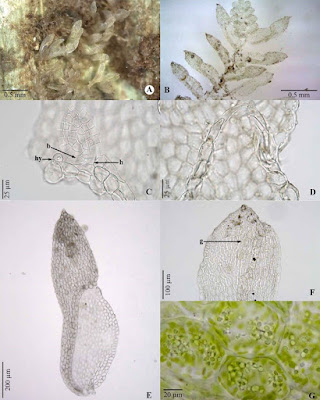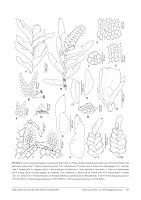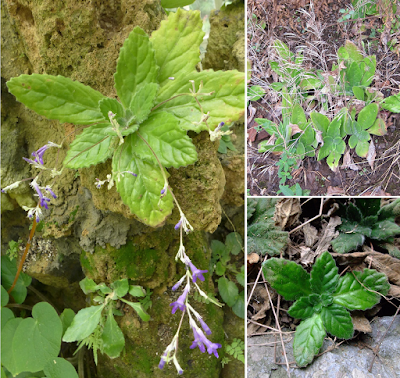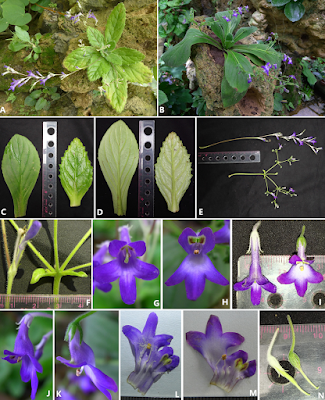[Most Recent Entries] [Calendar View]
Sunday, January 6th, 2019
| Time | Event | ||||
| 6:27a | [Botany • 2018] Colura sigmoidea • The Genus Colura section Gamolepis (Lejeuneaceae, Marchantiophyta) in Malesian Region, with the Description of A New Species
Abstract The taxonomic account of the genus Colura sect. Gamolepis in the Malesian region is presented based on fresh materials from field surveys and herbarium specimens. Five species are recognised including: C. cristata, C. meijeri, C. valida, C. verdoornii, and one new species, C. sigmoidea, described and illustrated. The new species is similar to C. cristata, but differs in having dioicous sexuality, ovate to lanceolate lobule sac ending with a small apical crest (consisting of 3–5 cells), small valve consisting of 30–40 cells and basal median cells of valve adnate with hinge cells forming a sigmoid curve in outline. A key to species, taxonomic descriptions and illustrations are provided; ecology and geographical distribution of the species are noted. Keywords: Colura, Colura sigmoidea, leafy liverwort, Malesian region, sect. Gamolepis, Bryophytes
Jiroat Sangrattanaprasert, Sahut Chantanaorrapint and Rui-Liang Zhu. 2019. The Genus Colura section Gamolepis (Lejeuneaceae, Marchantiophyta) in Malesian Region, with the Description of Colura sigmoidea. Phytotaxa. 387(1); 40–54. DOI: 10.11646/phytotaxa.387.1.3 | ||||
| 4:13p | [Botany • 2019] Primulina anisocymosa (Gesneriaceae) • A New Species with A Unique Inflorescence Structure from Guangdong, China
Abstract A new Primulina species from Guangdong, China with an unusual inflorescence is described here. Primulina anisocymosa is vegetatively most similar to P. bobaiensis. It can be distinguished from all species within Primulina morphologically by its unique zigzag monochasial cyme and infructescence. To confirm the phylogenetic relationships and generic placement of this species, not only morphological anatomical features but also chromosome and DNA sequence data were examined and analysed here. Two samples from different populations identified as Primulina anisocymosa are monophyletic and were nested in a monophyletic clade within Primulina with high branch support. The somatic chromosome number of the new species is also reported (2n = 36), supporting its placement in the genus. Primulina anisocymosa F. Wen, Xin Hong & Z.J. Qiu, sp. nov. Diagnosis. Primulina anisocymosa differs from other congeners by the presence of a zigzag monochasial cyme. Distribution. The new species is known from two locations: Gaozhou City and Yangchun City, Guangdong Province, southern China. This area is in the transitional zone between the tropics and subtropics. Habitat and ecology. Primulina anisocymosa is locally abundant in Yangchun, although very rare in Gaozhou, Guangdong. The total number of this species in Gaozhou does not exceed 100 individuals. It grows in rocky crevices of moist shady cliffs on a red sedimentary rock hill, at an elevation of 50 m a.s.l in Gaozhou City. The species also grows on the moist rock surface of limestone cave entrances in Yangchun. The average annual temperature of the two localities is similar (ca. 21 °C) and the average annual precipitation is around 2,380 mm. P. anisocymosa occurs in subtropical evergreen broad-leaved forest. Flowering from September to October and fruiting from October to December. Etymology. The scientific name is derived from its unusual zigzag monochasial cyme. The latin prefix, “aniso-”, means different, uneven or asymmetrical; “cyma” refers to the predominant inflorescence type seen in Primulina a pair-flowered cyme. Xin Hong, Jeremy Keene, Zhi-Jing Qiu and Fang Wen. 2019. Primulina anisocymosa (Gesneriaceae), A New Species with A Unique Inflorescence Structure from Guangdong, China. PeerJ. 7:e6157. DOI: 10.7717/peerj.6157 |
| << Previous Day |
2019/01/06 [Calendar] |
Next Day >> |


















